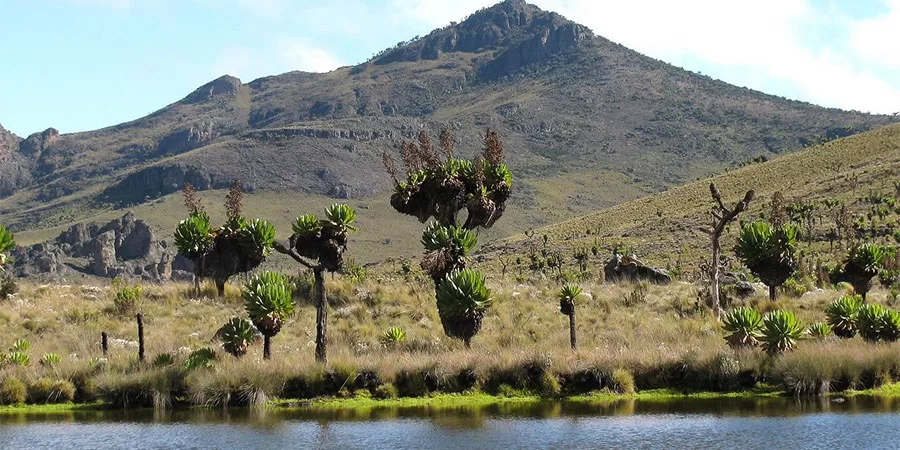Mount Elgon Officially Designated A UNESCO Transboundary Biosphere Reserve
Mount Elgon has been a UNESCO Biosphere Reserve since 2003 and twenty years later, this shield Volcano, known to have the World’s largest volcanic base at 4000 square kilometers has been designated a UNESCO Transboundary Biosphere Reserve. This, therefore, makes it the only one of its kind (Transboundary) on UNESCO’s more recent list of 11 sites that were published.
Mount Elgon sits along the border of Uganda with Kenya and towers over 4321 meters above sea level, thus making it the second tallest Mountain in Uganda after Mount Stanley of the Rwenzori Mountains range which towers over 5109 meters above sea level. This Mountain was formed by volcanic activity dating back to the Miocene period (10 to 25 million years ago). After the major eruption, the summit of this mountain collapsed into the chamber from which volcanic material was expelled. This resulted in the formation of a Caldera extending 8 kilometers in diameter hence making it one of the extraordinary examples in the World. The highest point of this Mountain is Wagagai at 4321 meters above sea level, and North of it is Jackson’s peak that towers 4160 meters above sea level.

Mount Elgon
Besides having the largest volcanic base in the whole World, Mount Elgon is also the oldest and largest volcanic mountain in the East African region, with a vast diameter (80 kilometers) and rising over 3000 meters above its surrounding plains. Mount Elgon’s cool and extraordinary heights offer the perfect respite from the hot surrounding savannah plains below with the higher elevations which also offer a haven to unique fauna and flora.
In Uganda, this shield volcano is protected by Mount Elgon National Park which was gazetted in 1993. Extending about 1121 square kilometers, it is a haven for over 30 species of small mammals such as rodents and shrews as well as larger mammals like Oribis, serval cats, Aardvarks, duikers, forest buffaloes, black and white colobus monkeys, forest elephants, Baboons, blue monkeys, leopards, Tree and Rock hyraxes, bushbucks, forest hogs, civets, De Brazza’s monkeys, bush pigs, Defassa waterbucks, to mention but a few. The Protected Area support over 300 species of birds, especially the ones associated with Tropical mountain massifs and other natural habitats. Other bird species in the Park are Tacazze sunbirds, Jackson’s francolins, the Black-shouldered Kite, the Black-collared Apalis, and the endangered Lammergeyer.
Besides the flora and fauna, this Transboundary Biosphere Reserve is known for its numerous Caves, some of which are over 300 meters or more in length. They were formed by differential weathering of different volcanic materials while others are as a result of small-scale salt mining pre-colonial period. Majority of
the Mining Caves and others were used as semi-permanent shelters until the 20th Century. The mountain is also a water catchment area, considering it receives huge amounts of rainfall and this is of importance to blossoming of vegetation as well as surrounding farming communities. It is a significant supplier of water for the people in Mbale, Kapchorwa, Soroti, Bududa and other districts.
Some of the interesting tourist activities provided in Mount Elgon National Park are mountain climbing or mountaineering, rock climbing, Trout fishing, birding tours, mountain bikes, Cave tours, community tours, and many others.
